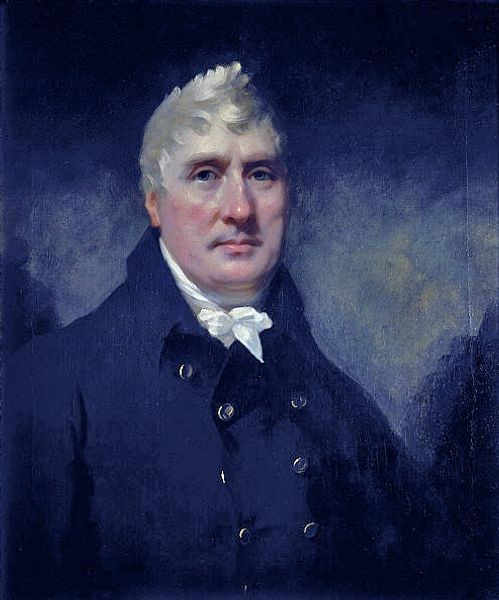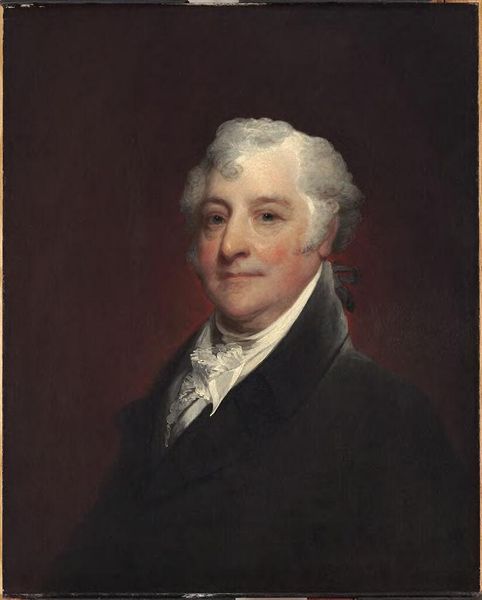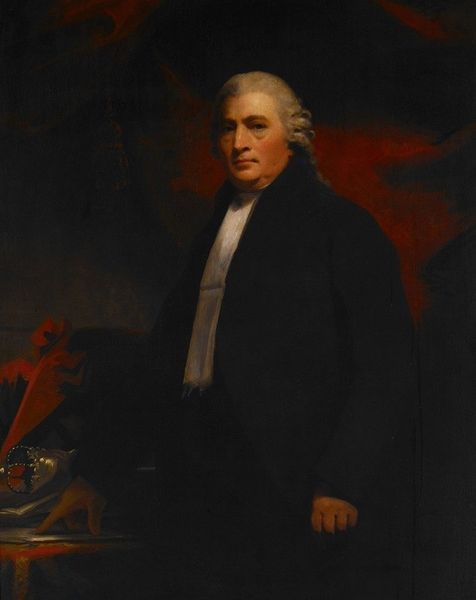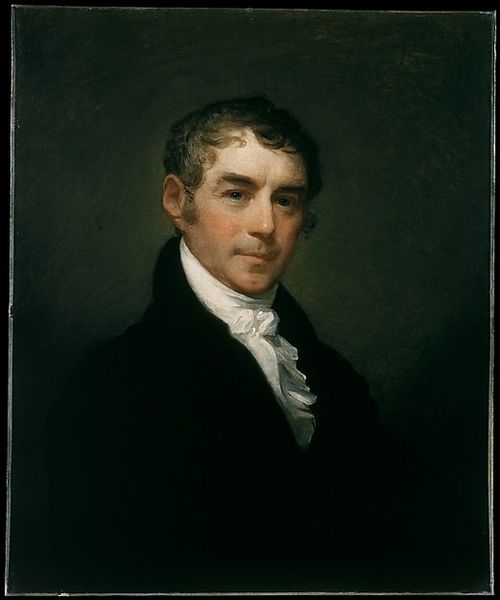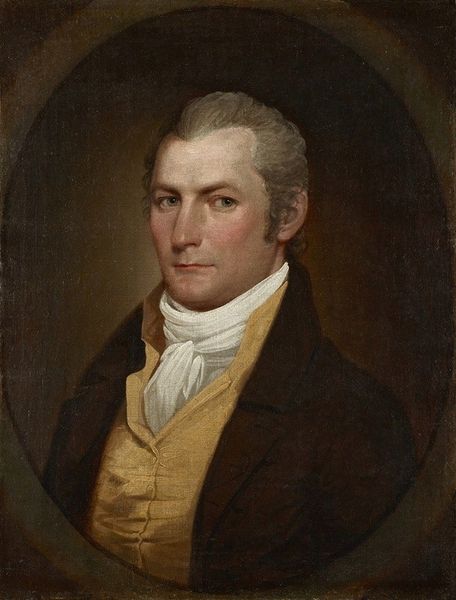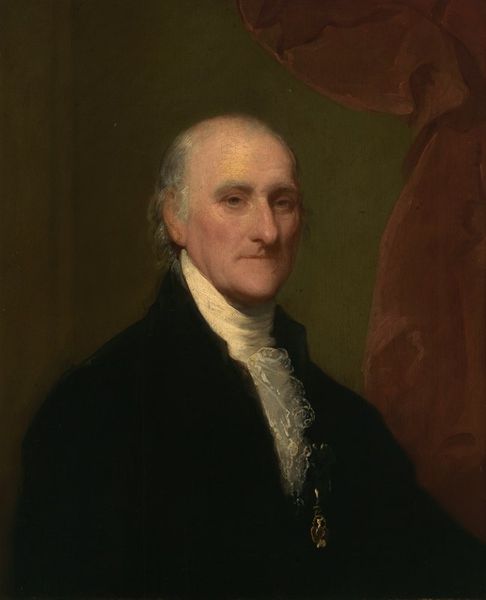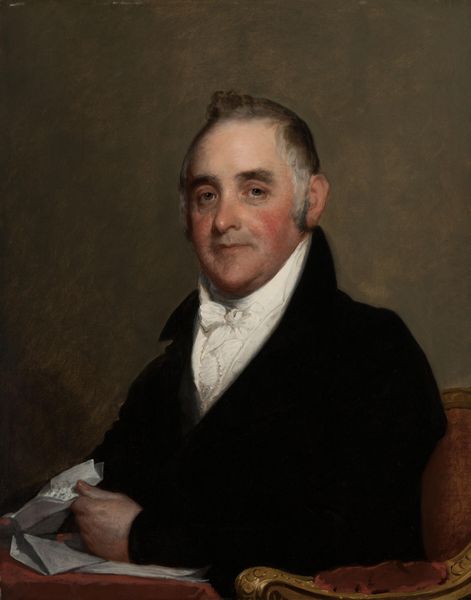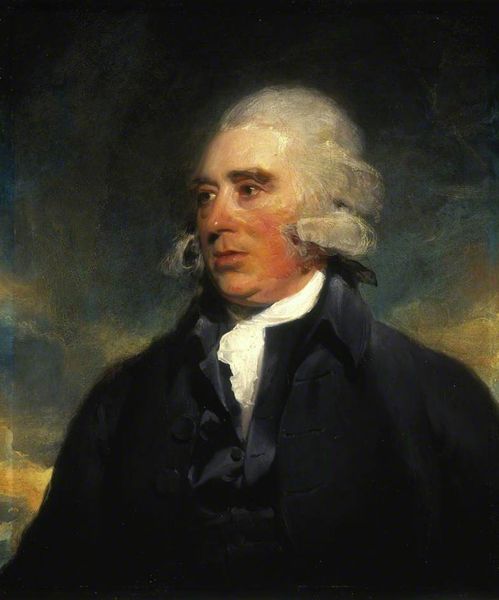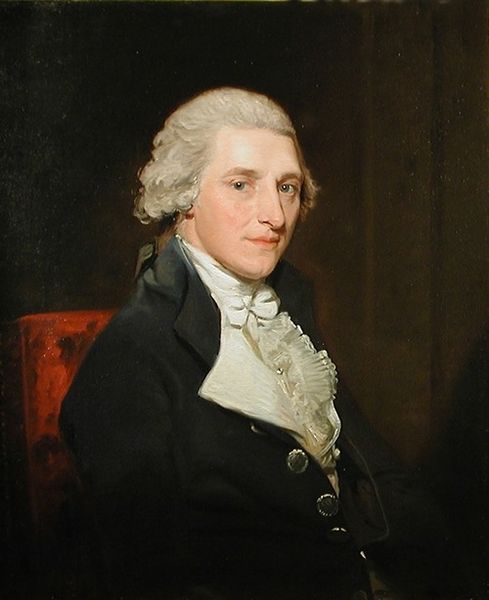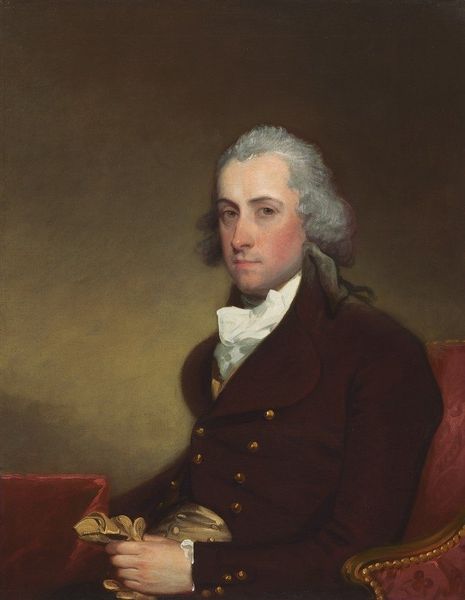
painting, oil-paint
#
portrait
#
figurative
#
character portrait
#
low key portrait
#
portrait image
#
portrait
#
painting
#
oil-paint
#
portrait subject
#
portrait reference
#
portrait head and shoulder
#
romanticism
#
portrait drawing
#
history-painting
#
facial portrait
#
realism
#
celebrity portrait
Copyright: Public Domain: Artvee
Curator: Welcome. Before us, we have a painting attributed to Henry Raeburn entitled, “Portrait of Sir Alexander Munro.” Editor: Striking portrait! The almost severe contrast between the subject and that deep, dark background immediately draws me in. It’s quite sombre, isn’t it? Curator: Indeed. Raeburn was a prominent portrait painter in Edinburgh. His portraits provide insight into the societal fabric of Scotland, particularly the figures who shaped its intellectual and professional spheres. Consider the visual politics at play; portraiture in this era served as a crucial marker of status. Editor: Absolutely. The somber tone definitely amplifies that feeling of dignified status. But what fascinates me are the material details – the way the oil paint has been applied, thinly in some areas to let the underpainting peek through and create depth, and thickly in others, particularly in the crisp white of the cravat, adding texture and suggesting a degree of extravagance even amidst the darkness. Curator: Precisely. It speaks to the evolving market. Raeburn skillfully captured his patrons, typically upper middle class individuals seeking to immortalize themselves and signal their social standing through artistic means. The layering technique suggests a meticulousness, reflecting the client’s desire for a refined image. Editor: You can really see the marks of labor in it. How long would it have taken him to create the subtle gradations in tone, to suggest not just a likeness, but character? It's fascinating how oil paint becomes this vehicle for representing societal power, even personal identity. Look closely at the construction of the sitter’s coat! Curator: That coat is very symbolic of the new wealth earned in Scottish society at the time! Though dating the work precisely remains difficult, it embodies the romanticism era by focusing on representing an individual rather than glorifying historic scenes. Editor: Right, it's amazing how artistic practices intertwine with shifts in material culture and economics. Even portraiture – it seems traditional, but Raeburn's technique here points to very specific developments in the use of oil paint as a commodity, and its role in capturing and shaping social identities. Curator: A fitting observation. His works, at their heart, were very successful enterprises in shaping visual, political and social identities. Editor: So, next time you see a grand portrait, remember to look for not only the individual, but all of those artistic labor practices which are invisibly propping up the representation of the wealthy elites and Scottish Society.
Comments
No comments
Be the first to comment and join the conversation on the ultimate creative platform.
